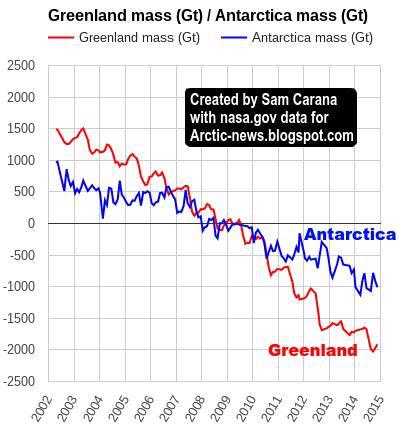Climate Change - How the great ice sheets are melting
An ice sheet is a mass of glacial land ice extending more than 50,000 square kilometres.
An ice cap is an area of land ice smaller than an ice sheet.

The two ice sheets on Earth today cover most of Greenland and Antarctica.
An example of an ice cap is Iceland’s Vatnajökull.
The ice sheets are now losing ice at the unprecedented rate of 500 cubic kilometres a year.

Scientists from the Alfred Wegener Institute (AWI) in Bremerhaven mapped changes in the height of the Greenland and Antarctic ice sheets.
They have found they are melting at record pace.

A new NASA project called Oceans Melting Greenland (OMG) will observe changing water temperatures on the continental shelf surrounding Greenland, and how marine glaciers react to the presence of warm, salty Atlantic water.
Some people confuse ice sheets with sea ice, but they are not the same.
Arctic sea ice area is declining over time.
Antarctic sea ice behaves in a more complex way.
An ice cap is an area of land ice smaller than an ice sheet.
The two ice sheets on Earth today cover most of Greenland and Antarctica.
An example of an ice cap is Iceland’s Vatnajökull.
The ice sheets are now losing ice at the unprecedented rate of 500 cubic kilometres a year.

Scientists from the Alfred Wegener Institute (AWI) in Bremerhaven mapped changes in the height of the Greenland and Antarctic ice sheets.
They have found they are melting at record pace.
“Since 2009, the volume loss in Greenland has increased by a factor of about 2, and in the West Antarctic Ice Sheet by a factor of 3,”
says glaciologist Professor Dr. Angelika Humbert, one of the study’s authors.
Some people confuse ice sheets with sea ice, but they are not the same.
Arctic sea ice area is declining over time.
Antarctic sea ice behaves in a more complex way.